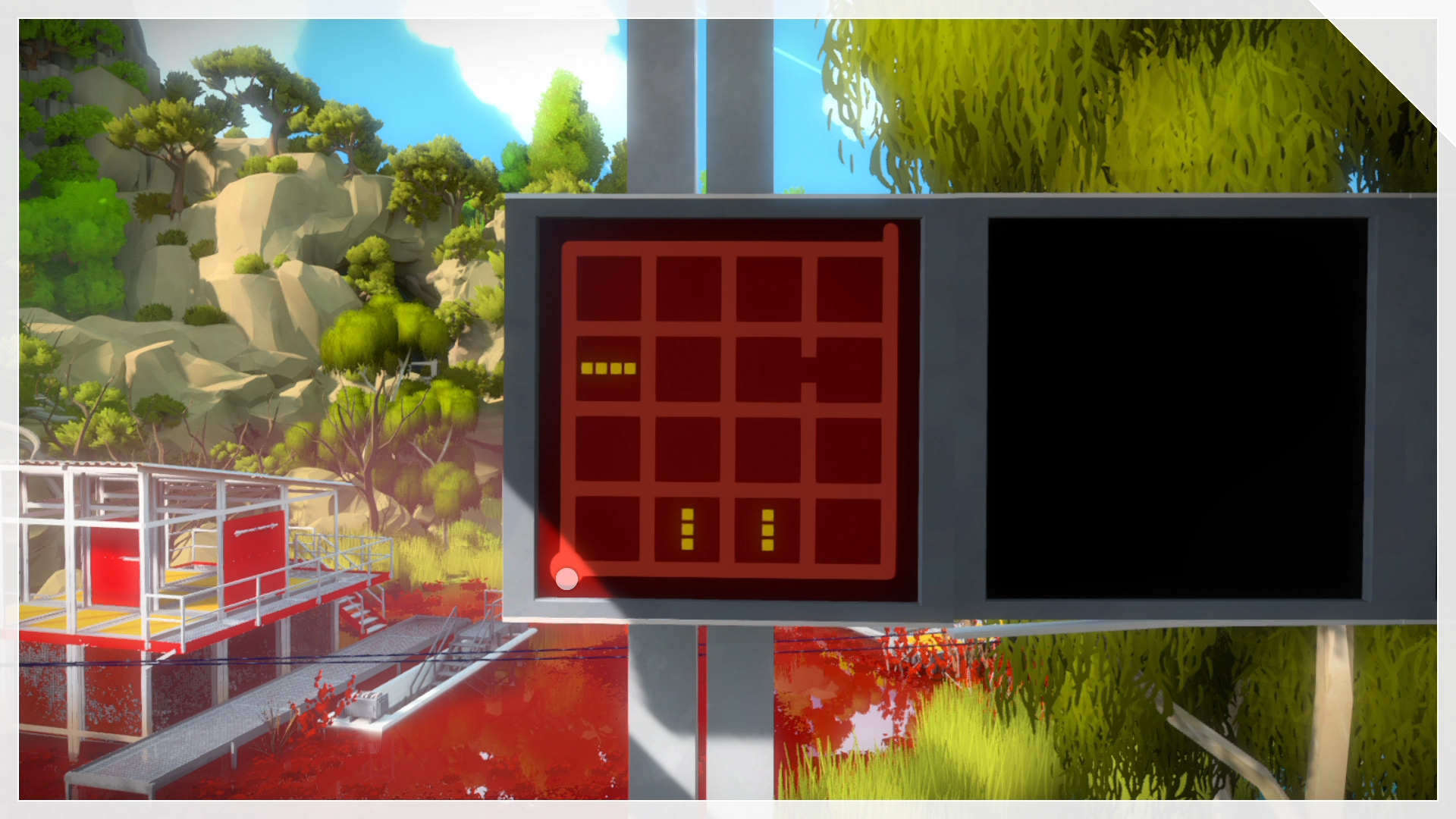The Witness - My Favorite Puzzle Video Game
Players: 1
Ages: 8 and up
Cost: $10 on iPhone and iPad, $40 on PC or console
Math Ideas: Logical deduction, spatial reasoning
Questions to Ask:
Can the previous puzzle help you solve the next one?
Can you design your own Witness puzzle?
I don't often recommend video games or applications. That's intentional: part of the fun (and learning) that kids experience when playing games is the physical relationship between real objects. Building a tower in Minecraft is a poor substitute for building a tower with wooden blocks or Magna-Tiles.
But there are a few games that I stand by. One for the younger set is Dragonbox Numbers, which I recommended last year.
For older kids, I recommend my favorite puzzle game of all time, The Witness.
How to Play
If you have fond memories of exploring the island of Myst back in the 90s, you will love The Witness:
Your character wakes up on an island that is completely uninhabited. All around the island are these puzzles that all share a common structure: You draw a single continuous line from one place on the puzzle to another.
Beyond that, you have no other information. You don't know what the ultimate goal of the game is, or which puzzles to solve in which order. But as you solve more and more puzzles, you learn more and more about the island you're on. But don't worry: just wandering around the island is a treat in and of itself. This game is absolutely beautiful, as you can see from the trailer here:
The only other thing I'll say is DO NOT READ OTHER REVIEWS OF THIS GAME! There are wrinkles to the game that are revealed over time, and those reveals are some of the most satisfying moments of gaming in my life. Unfortunately, lots of reviews of the game spoil these elements, which is totally lame. Don't ruin it for your child (or for yourself).
Where's the Math?
The core of this game is about logical deduction. Like most puzzle games, the puzzle is a tool that the designer uses to teach the player how to play. So the first few puzzles are simple: draw a line through this maze.
As you solve more puzzles, you begin to learn how different variations work. Sometimes you need to draw a line through the maze in a specific way, as indicated by special shapes on the puzzle. Other times, clues in the surrounding environment show you the correct way to solve the puzzle.
The game constantly creates these moments where you learn how a new puzzle works, get really adept at solving it, and then a new puzzle arrives that totally subverts your expectations. There were puzzles on the island that I truly thought were impossible when I encountered them at first, but then I returned to them later on armed with new knowledge and solved them easily.
So no, the game doesn't have a bunch of multiplication practice or anything like that. But it feels more like math to me than almost anything else: you start with a few rules that you know to be true, and then you see how you can combine them to solve new problems. As you go, you add new tools to your tool belt and learn how to connect ideas in new and interesting ways.
It reminds me most of geometry class, where you are given some set of shapes and asked to find the length of the unknown side. You might reach into your tool belt and pull out the Pythagorean Theorem or the knowledge that the diagonals of a rhombus bisect each other. Whatever you use, though, you will need to apply in an interesting way to solve the problem.
The Witness is a beautiful math game, and I don't mean aesthetically (although it is visually stunning). It's beautiful because it gives kids, and adults, a sense of the joy that comes from seeing an old idea in a new way and using that new perspective to solve previously unsolvable problems.
Can you tell I love this game?!?
Questions to Ask
The Witness is definitely a solo gaming experience; often the best thing you can say to your child is "Don't get frustrated. Why don't you explore a different part of the island?"
Your child might want you to show them how to solve a certain puzzle: I would be very hesitant to do so. The frustration that is building will just make the satisfaction of discovery even more meaningful.
But of course, sometimes it's worth giving a hint so your child doesn't give up entirely. Try to find the smallest hint that will give your child the ability to proceed. Dan Meyer's motto to "be less helpful" is good to keep in mind.
If your kid gets hooked on the game, you might ask them "Could you design your own Witness puzzle?" They could use the established rules of the game, or they could make up new shapes that indicate brand new rules! And as always, coming up with new puzzles is a great way to learn more about the puzzles themselves.
I'd recommend the cheaper version ($10 on iPad or iPhone) but you can also buy a version for XBox One (affiliate link), PS4, or PC.







